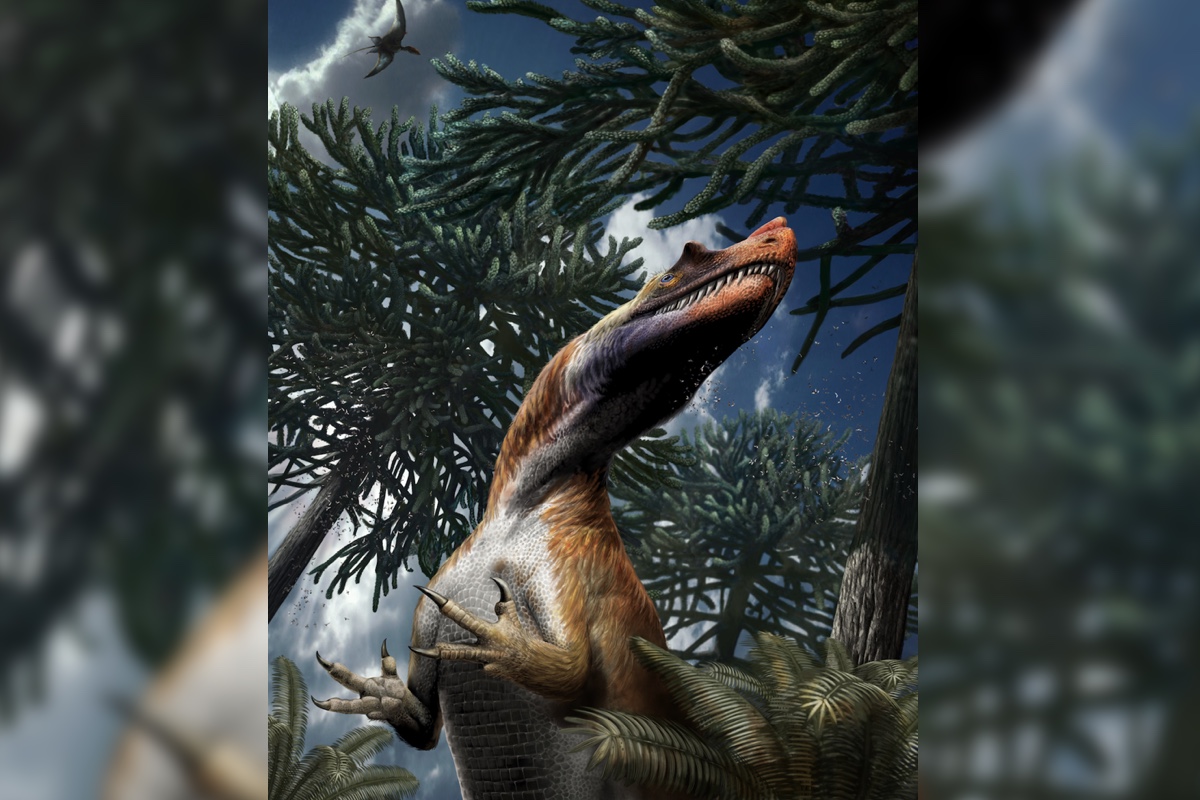'Miracle' Dinosaur Whose Bones Survived Being Blown Up Discovered in Italian Alps

Paleontologists have excavated a mighty meat-eating, four-fingered dinosaur from an unexpected spot: the Italian Alps.
The newly identified beast — dubbed Saltriovenator zanellai — lived about 200 million years ago, and it's the first-known Jurassic dinosaur discovered in Italy, the researchers said. It's also the oldest-known ceratosaurian, as well as the largest (it weighed 1 ton), predatory dinosaur known from the earliest part of the Jurassic.
S. zanellai's journey to fossilization and discovery thrilled scientists, who deduced that the dinosaur's body ended up in the sea, where marine critters nibbled on its bones before it was buried. Then, it was lifted up toward the heavens as the Alps began forming about 30 million years ago. [See images of the four-fingered Italian dinosaur]
"It is a miracle that it survived such a long chain of events: drifting away to the sea, then floating, sinking, being scavenged by marine animals, reworked by sea bottom currents, buried, uplifted within a mountain chain, and eventually blown up by human explosives," study lead researcher Cristiano Dal Sasso, a curator of vertebrate paleontology at the Milan Natural History Museum, told Live Science.
(The excavation was difficult because, previously, industrial workers had used dynamite to blow up the quarry, which broke the fossils into hundreds of pieces, the researchers said.)
Angelo Zanella, an amateur fossil hunter, discovered the bones in 1996 in a marble quarry near Saltrio, less than 50 miles (80 kilometers) northeast of Milan. Dal Sasso and his colleagues then scouted out the site, digging up more bones, many of which had feeding marks from ancient marine invertebrates (sea animals without a backbone).
These chew marks make S. zanellai one of the few dinosaur specimens showing signs of marine invertebrate scavenging. Another was the armored ankylosaur Aletopelta, whose remains were likely nibbled on by scavenging marine invertebrates that lived off the coast of what is now Southern California, according to a 1996 study in the Journal of Paleontology.
Sign up for the Live Science daily newsletter now
Get the world’s most fascinating discoveries delivered straight to your inbox.
Four-finger salute
Many of the 132 S. zanellai bones were fragmented, but there was enough evidence to indicate that the dinosaur had four fingers. The oldest dinosaurs, such as Herrerasaurus, had five fingers. But all known ceratosaurs, including the newfound Saltriovenator, Limusaurus, Ceratosaurus and Eoabelisaurus, had four fingers.
"Somewhere on the evolutionary line to ceratosaurs, the fifth (outermost) digit (the "pinky") was lost, resulting in the four-fingered hand of ceratosaurs," Matthew Lamanna, an assistant curator of vertebrate paleontology at Carnegie Museum of Natural History in Pittsburgh, who wasn't involved with the study, told Live Science in an email.
Later, theropods (mostly carnivorous, bipedal dinosaurs, such as Tyrannosaurus rex) took this trend a step further by losing their fourth (or "ring") finger, leading to the three-fingered hands seen in theropods such as Allosaurus, Oviraptor and Velociraptor. Later, these three fingers gave rise to the bird wing, Lamanna said.
There was some debate over which finger these three-fingered theropods "lost," but "Saltriovenator helps to show that the three-fingered hand of these theropods was produced through loss of the fourth finger rather than the first (thumb)," Lamanna noted.
Huge carnivore
S. zanellai was large — about 26 feet (8 meters) long — but the subadult wasn't done growing yet, study co-researcher Simone Maganuco, a vertebrate paleontologist at the Milan Natural History Museum, said in a statement. [Photos: Newfound Dinosaur Had Tiny Arms, Just Like T. rex]
"The evolutionary 'arms race' between stockier predatory and giant herbivorous dinosaurs, involving progressively larger species, had already begun 200 million of years ago," Maganuco said.
Three of S. zanellai's four fingers had powerful claws, which likely served as a terrible "weapon of war" during the dinosaur age, Dal Sasso added.
The dinosaur's scientific name (Saltriovenator zanellai) means "Zanella's Saltrio hunter." (In Latin, "venator" means hunter.)
The study was published online today (Dec. 19) in the journal PeerJ.
- Photos: Newfound Tyrannosaur Had Nearly 3-Inch-Long Teeth
- Photos: The First Dino Fossil Found in Washington
- Dinosaur Guts: Photos of a Paleo-Predator
Originally published on Live Science.

Laura is the archaeology and Life's Little Mysteries editor at Live Science. She also reports on general science, including paleontology. Her work has appeared in The New York Times, Scholastic, Popular Science and Spectrum, a site on autism research. She has won multiple awards from the Society of Professional Journalists and the Washington Newspaper Publishers Association for her reporting at a weekly newspaper near Seattle. Laura holds a bachelor's degree in English literature and psychology from Washington University in St. Louis and a master's degree in science writing from NYU.









